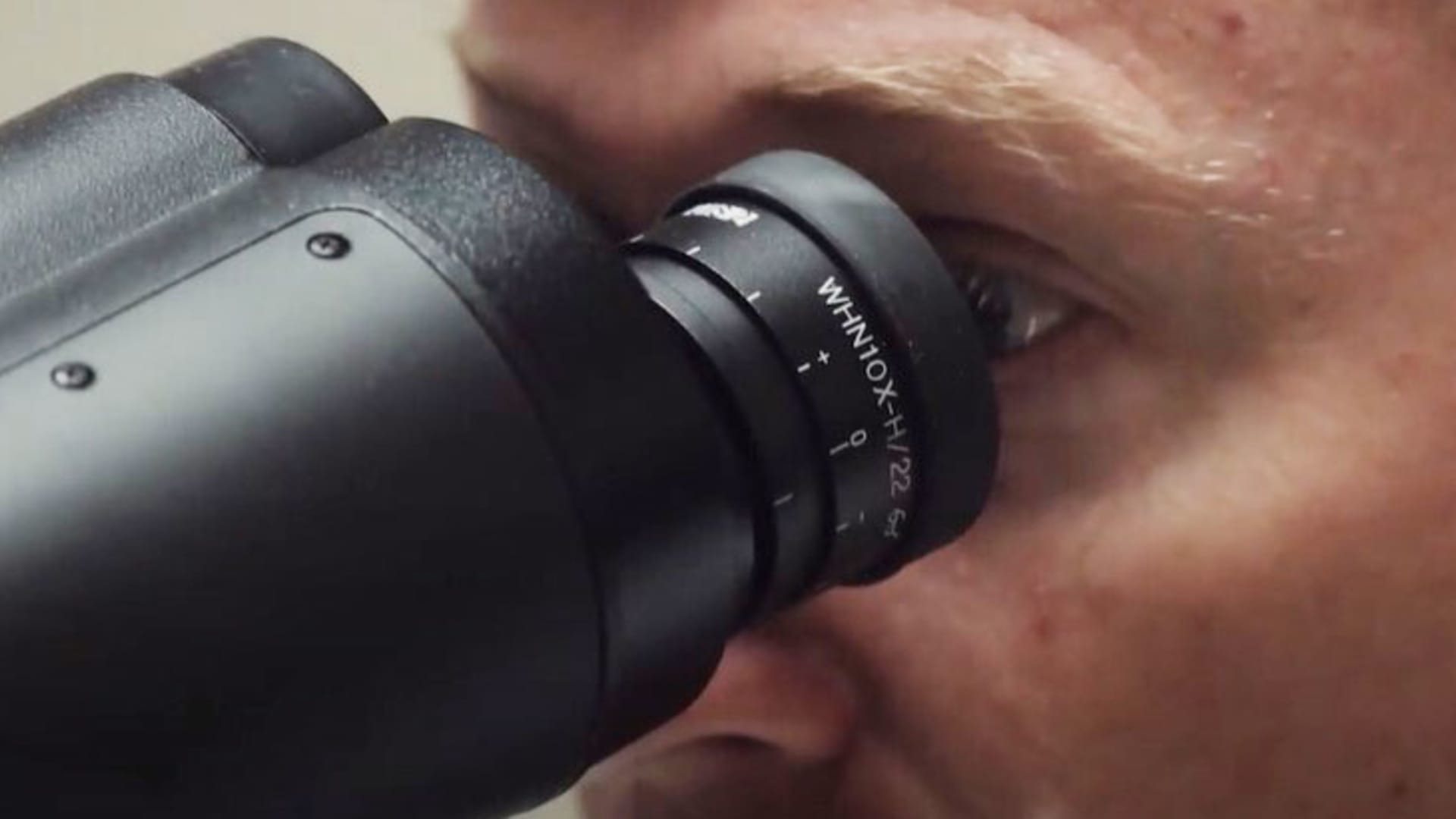Dr. Niels Olson Uses the Augmented Reality Microscope: A Revolutionary Tool for Pathologists
Dr. Niels Olson, Chief Medical Officer of the Defense Innovation Unit (DIU) at the U.S. Department of Defense, has been working with Google to develop the Augmented Reality Microscope (ARM). This AI-powered microscope is set to revolutionize the field of pathology by providing pathologists with a powerful tool to aid in the diagnosis of diseases like cancer.
Pathology is a crucial field of medicine that often operates behind the scenes. Pathologists, like Dr. Olson, carry out clinical lab tests to diagnose conditions such as cancer. However, there can often be disagreements among pathologists about the severity of a disease. In one case, Dr. Nadeem Zafar, a pathologist at the VA hospital in Seattle, used the ARM to settle a debate about the aggressiveness of a prostate cancer case. The AI-powered microscope quickly flagged the specific part of the tumor that Dr. Zafar believed was more aggressive, providing evidence to support his diagnosis.
The ARM, developed by Google and the Department of Defense, is an innovative tool that combines artificial intelligence with traditional microscopy. Currently, there are 13 ARMs in existence, with one located at a Mitre facility in Washington, D.C. Mitre, a nonprofit organization, is working with the ARM to identify the vulnerabilities that can affect pathologists in a clinical setting.
The ARM closely resembles a traditional microscope but is connected to a computer tower that houses AI models. When a glass slide is examined under the microscope, the AI outlines the location of cancer with a bright green line that pathologists can see through their eyepiece and on a separate monitor. The AI also provides information about the severity of the cancer through a black and white heat map.
While the ARM is not yet actively being used to diagnose patients, initial research is promising. It could be particularly beneficial for pathologists who don’t have easy access to a second opinion. Pathologists currently face workforce shortages and increasing caseloads, which can lead to errors and missed diagnoses. The ARM can help alleviate these challenges by providing an additional layer of support.
Digitizing pathology workflows has been a goal for many organizations to increase efficiency. However, digital pathology comes with its own challenges, such as large-scale data collection and storage. The ARM is not intended to replace digital pathology systems but can be a cost-effective alternative. Health systems can take screen grabs of slides using the ARM’s software, which require significantly less storage.
The ARM is an exciting development in the field of pathology, and its potential applications are vast. Since the DIU has access to a comprehensive healthcare dataset, collaborations between the Department of Defense and Silicon Valley could lead to significant advancements in civilian healthcare systems.
The ARM is still in its early stages, but its ability to provide fast and accurate diagnoses has the potential to revolutionize pathology. Pathologists like Dr. Olson are excited about the future of the ARM and the impact it can have on patient care.
Denial of responsibility! Vigour Times is an automatic aggregator of Global media. In each content, the hyperlink to the primary source is specified. All trademarks belong to their rightful owners, and all materials to their authors. For any complaint, please reach us at – [email protected]. We will take necessary action within 24 hours.


